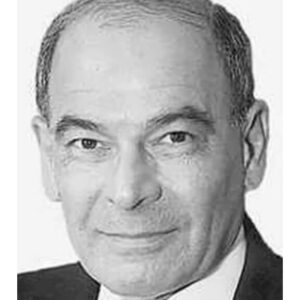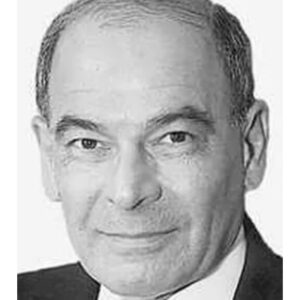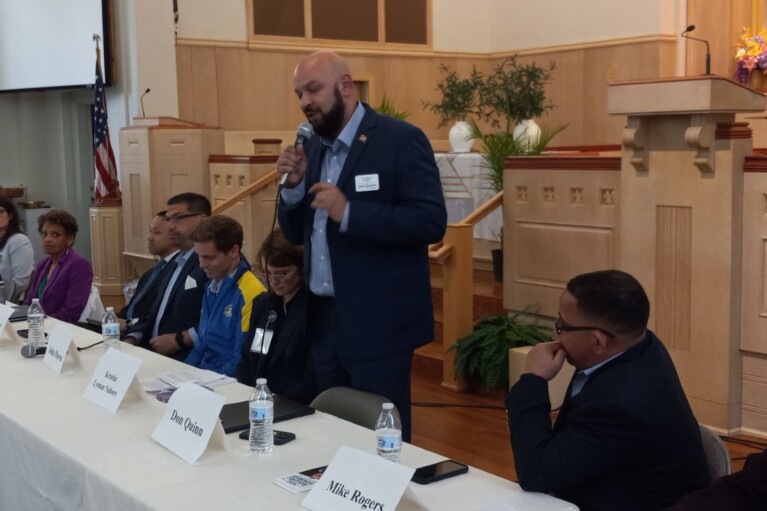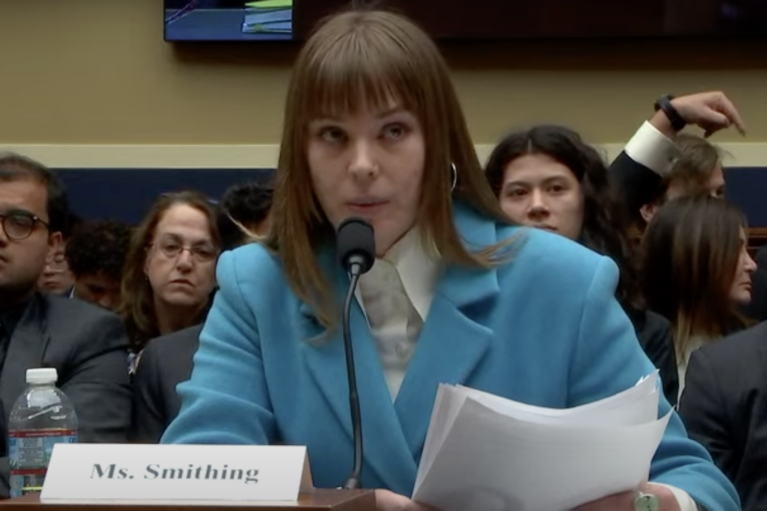Frank DeFilippo: Being Lieutenant Governor Can be a Very Lonely Position

When the governor of Idaho was out of state recently, his second in command issued an executive order rescinding the boss’s actions on COVID-19 vaccinations and requirements for wearing masks.
Both are right-wing Republicans and they are supposed to be political partners. But Lt. Gov. Janice Mc Geachin is far to the right of the top official, Gov. Brad Little, and she was trying to buff up her bona fides while he was in Texas at a meeting of Republican governors. Little, upon learning of the seditious act — and it was not the first betrayal by his understudy — quickly countermanded the order.
In Texas, the lieutenant governor has as much, if not more, inherent powers than the governor because of the dual role as presiding officer of the Senate. The No. 2 person actually has an apartment in the state capital building, and automatically assumes the duties of the governor when the chief executive is out of state.

Frank A. DeFilippo
In Kentucky, not long ago, a judge ruled that the governor has “superseding authority” to hire and fire the lieutenant governor’s staff, and the lieutenant governor has none — unless the governor grants it.
In neighboring Virginia, the governor and lieutenant governor run independently of each other and can be elected from competing political parties, as has occasionally happened. The lieutenant governor succeeds the governor if a vacancy or incapacity occurs.
Those are a few concerns, among others at the time, that framed the thinking of why candidates for governor and lieutenant governor of Maryland run stapled together and they must file jointly before the primary election filing deadline.
Now there is movement underway in the General Assembly to overhaul the cumbersome selection process for lieutenant governor so it mimics the presidential nominating system: let the political parties choose their candidates for governor in the primary elections first, and then allow the nominees to name their running mates after the election, the way it’s done at the national level.
Sounds like a plan. The current comic opera is an awkward way of choosing a possible substitute governor. It automatically eliminates perhaps the best possible candidate(s) in the primary election.
In 25 states, the governors and lieutenant governors are elected jointly and in 18 states they are elected separately, according to the National Conference of State Legislatures. Five of the remaining seven states have no lieutenant governors, while the other two assign the duties to their senate presidents.
The Maryland office of lieutenant governor was reconstituted, by voter ratification of a constitutional amendment, in 1970 for the first time since the Civil War. The rebirth of the office was proposed by Gov. Marvin Mandel (D) on a promise following his election by the General Assembly to fill the vacancy left by Spiro T. Agnew (R) upon his departure to become vice president. At the time, there was no direct line of succession. It was only the second time in Maryland history that such a selection process had occurred.
Mandel chose Blair Lee III, then a state senator, as his secretary of state, with the understanding that Lee would be his running mate for lieutenant governor on the same ballot in 1970 that would create the office. Put another way, the amendment had to pass for Lee to get the job.
Lee was the kind of class act that Mandel needed to burnish his image in the Maryland suburbs around Washington, a Montgomery County aristocrat named after the Blairs of Blair House and the Lees of Virginia.
But there’s another sneaky little hook in the constitutional amendment: The lieutenant governor has only those duties assigned by the governor, hardly a job description for master of the universe.
And if and when the governor of Maryland leaves the state, they are supposed to give their understudy a letter outlining exactly the powers and duties the lieutenant governor can execute during their absence.
Mandel usually handed Lee a letter giving him the “full powers of the governor,” but after a few missteps, Mandel ducked out of Maryland on business, whenever he could, without leaving Lee a letter — or the higher authority of being “acting governor.”
There has been little public acknowledgement of an exchange of letters since the Mandel days when it began. But even in Maryland, where great precautions were taken to avoid friction and separation between the state’s top two elected officials, there have been at least two celebrated blow-ups and subsequent ostracisms. And who knows how many unsettled, private disagreements and hurt feelings.
So it boils down to this: Nobody knows exactly what a lieutenant governor does, but Maryland law says that every candidate running for governor must have one — just in case a spare part is needed.
The matchmakers are out with their tout sheets, trying to assemble dream tickets, when history and custom show that people vote for the top of the ticket and not lieutenant governor, though that office is an implied part of the deal. No second banana has ever made it to the top.
For the record, the eight who’ve coat-tailed into the State House as second in command are: Lee, Samuel Bogley, J. Joseph Curran Jr., Melvin Steinberg, Kathleen Kennedy Townsend; Michael Steele, Anthony Brown and Boyd K. Rutherford. (The four who have run for governor and lost are Lee, Steinberg, Townsend and Brown.)
In the early days of the office, geography and political strength were the currency for selection to the second slot. Those bullet points have been largely replaced with gender and color to conform to Maryland in the present tense.
Of the dozen candidates for governor, Democrat and Republican, only three among them have chosen running mates well in advance of the filing deadline of Feb. 22, 2022: Rushern Baker, a Democrat, has paired up with Nancy Navarro, a member of the Montgomery County Council; Del. Daniel Cox, Republican, has chosen Gordana Schifanelli, an attorney from Queen Anne’s County; and Comptroller Peter V.R. Franchot, Democrat, selected Monique Anderson-Walker, a first-term member of the Prince George’s County Council and wife of Del. Jay Walker (D).
In his zeal to advance his campaign another notch, Franchot apparently brushed aside the irony of his choice — the state’s tax collector selecting a running mate with a tax problem and a recent ethics admonishment, as reported by colleague Bruce DePuyt. Fresh off the announcement of their ticket, Franchot and Anderson-Walker were, within minutes, trying to bat down questions about her financial history and a federal tax lien.
And to illustrate that Maryland’s political marriages of convenience were not always happily-ever-after despite earlier built-in precautions, the two messy break-ups make a cogent point.
Gov. Harry R. Hughes (D), described memorably in 1978 as a “lost ball in tall grass,” had slim pickings for a running mate because of his early longshot status.
Earlier in the election, Hughes had begged to be No. 2 on Lee’s ticket, but Lee was told the Mandel forces would abandon him if he chose Hughes. So Hughes decided to run for governor on his own. Lee, instead, linked up with then-Senate President Steny H. Hoyer in a deal brokered for Lee with Peter O’Malley, of the dominant O’Malley machine in Prince George’s County.
Denied the choice of an A-list running mate, Hughes picked Samuel Bogley, of Prince George’s County, as a last-minute act of desperation, who shortly after being installed as lieutenant governor was banned from officialdom over a public disagreement with Hughes’ pro-choice policy on abortion. Bogley’s wife, Rita, openly campaigned for abortion repeal in the hallways and balconies of the State House, papering the antique building with pictures of aborted fetuses.
Hughes dumped Bogley and replaced him on the ticket in 1982 with Curran, then who, after four years in the number two office, decided to run for attorney general, the office Stephen H. Sachs abandoned to run for governor in 1986.
Sen. Melvin “Mickey” Steinberg, (D) gave up the Senate presidency to round out William Donald Schaefer’s legal requirement for a ticket-mate in 1986, a deal brokered by Baltimore political impresario Irv Kovens. For the first term, and through reelection in 1990, the two were bosom buddies, Schaefer the out-front stunt man, and Steinberg working backstage massaging the legislature.
But Steinberg ran afoul of Schaefer when he broke with the administration by opposing tax increases in the middle of a recession. And when Steinberg ran for governor on his own in 1994, without a helping hand from Schaefer and his allies, he was defeated in the primary by Gov. Parris N. Glendening (D) and his ticket-mate, Townsend. Glendening had picked Townsend as his understudy for the magic of the Kennedy name and its magnetic ability to attract campaign funds.
Anyone who’s interested in more than a consolation prize need not apply.




 Creative Commons Attribution
Creative Commons Attribution